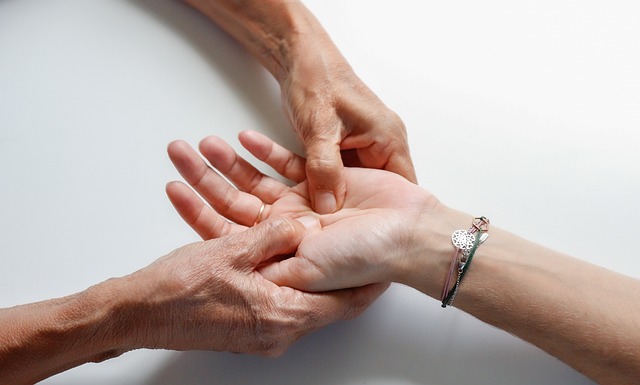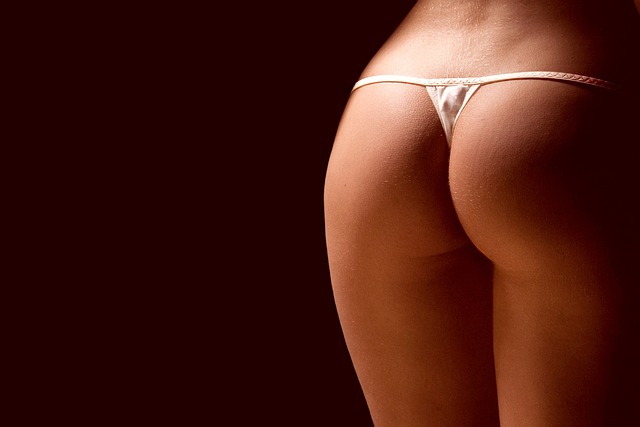TL;DR:
Cellulite, a common concern affecting primarily women's thighs, buttocks, and abdomen, is caused by hormonal changes, genetics, lifestyle choices, and fat distribution. Modern body sculpting treatments target cellulite by breaking down fat, improving skin elasticity, and offering tailored solutions. Non-invasive techniques like RF, HIFU, and laser therapy are popular due to minimal downtime and FDA approval. While effective, these require multiple sessions. Surgical options like liposuction provide immediate results but have longer recovery times and potential risks.
Safety is paramount when choosing treatments, with side effects ranging from redness to bruising, though rare complications exist. Personalized consultations with qualified specialists are crucial for understanding unique skin types, severity of cellulite, and desired outcomes. Post-treatment care, including hydration and exfoliation, enhances results. Future advancements in body sculpting will focus on non-invasive, patient-centric approaches, catering to individual needs.
Cellulite, a common concern for many, is more than just a cosmetic issue—it’s a complex condition affecting millions. This article delves into the world of body contouring, exploring various methods to reduce cellulite. From understanding the root causes to examining traditional and non-invasive techniques, we uncover popular sculpting treatments, their benefits, and potential drawbacks. We guide you through safety precautions, help choose the right plan, and provide post-treatment care tips. Discover future trends in cellulite management and transform your body with informed decisions on these effective body sculpting treatments.
Understanding Cellulite: Causes and Factors

Cellulite, often considered a cosmetic concern, is a common condition affecting many individuals, particularly women. It’s characterized by uneven skin texture, appearing as tiny bumps or dimples, typically found on the thighs, buttocks, and abdomen. Understanding the causes of cellulite is key to addressing it effectively with body sculpting treatments.
Several factors contribute to its development, including hormonal changes, genetics, lifestyle choices, and fat distribution. Hormones play a significant role in relaxing collagen and elastic fibers beneath the skin’s surface, leading to that distinctive dimpled look. Genetic predisposition can also make some people more susceptible to cellulite due to weaker connective tissue. Additionally, factors like poor diet, lack of physical activity, smoking, and excessive alcohol consumption can exacerbate it by promoting fat accumulation and damaging collagen fibers.
Traditional Methods of Cellulite Reduction

Cellulite, often referred to as orange peel skin, is a common concern for many. Historically, reducing its appearance has relied on traditional methods like diet and exercise, which can be effective but time-consuming and inconsistent. These conventional approaches focus on overall weight loss, hoping to minimize the visibility of cellulite by slimming down. However, they might not target specific problem areas as effectively.
The evolution in aesthetics has introduced body sculpting treatments that offer more targeted solutions. These modern techniques go beyond general weight management, directly addressing cellulite by breaking down fat and improving skin elasticity. With advancements in technology, procedures like laser therapy, radiofrequency, and mesotherapy now provide effective ways to reduce the appearance of dimpled skin, offering patients more tailored and lasting results.
Non-Invasive Body Contouring Techniques

Non-invasive body contouring techniques have gained significant popularity as they offer effective solutions for reducing cellulite and reshaping the body without incisions or lengthy recovery periods. These treatments leverage advanced technologies to target fat cells, stimulate collagen production, and improve skin texture. One prominent method is radiofrequency (RF) body sculpting, where RF energy is used to heat deep layers of the skin, leading to enhanced lipid breakdown and collagen remodelling. Another innovative approach involves high-intensity focused ultrasound (HIFU), which precisely targets and breaks down fat cells while preserving surrounding tissues.
These non-invasive body contouring treatments are often preferred by individuals seeking visible results without surgery. They are suitable for various areas of the body, including problem zones like the thighs, buttocks, and abdomen. Moreover, they offer a more comfortable and quicker alternative to traditional liposuction, making them an attractive option for those who desire a smoother, firmer appearance.
Popular Body Sculpting Treatments: A Comparison

When it comes to tackling cellulite and achieving a smoother, more sculpted look, there’s a plethora of body contouring treatments available in today’s market. Each method promises results, but they vary greatly in terms of effectiveness, safety, and cost. Let’s explore some popular options to help you make an informed decision.
One widely recognized treatment is laser therapy, which uses targeted light energy to break down fat cells and stimulate collagen production. This non-invasive procedure is known for its ability to improve skin texture and reduce the appearance of orange peel. Another popular choice is ultrasound body contouring, where high-frequency sound waves are used to destroy fat cells and tighten skin. It’s a safe, FDA-approved method offering measurable results without any downtime. On the other hand, radiofrequency (RF) treatments heat up deep layers of skin to stimulate collagen renewal and improve skin elasticity, leading to a more toned appearance. Each of these Body Sculpting Treatments has its advantages and is suitable for different skin types and concerns, so choosing the right one depends on individual needs and preferences.
Benefits and Drawbacks of Different Procedures

Body contouring treatments for cellulite offer a range of benefits and drawbacks, varying depending on the specific procedure. Non-invasive methods like laser therapy and radiofrequency treatments are popular for their minimal downtime and non-surgical approach. These procedures gently heat targeted areas to stimulate collagen production, improving skin texture and reducing the appearance of orange peel. However, results may be less dramatic than surgical options and can require multiple sessions for optimal effect.
Surgical body contouring, such as liposuction or mesotherapy, provides more pronounced results but comes with longer recovery times and potential risks. Liposuction physically removes fat cells, leading to immediate and lasting reductions in cellulite. Mesotherapy injects substances into the skin to break down fat and stimulate collagen growth. While effective, these surgical procedures carry higher chances of complications and require careful consideration from qualified medical professionals.
Safety Precautions and Side Effects to Consider

When considering body contouring treatments for cellulite, it’s crucial to be aware of potential safety precautions and side effects. As with any medical procedure, there are risks involved. Body sculpting treatments such as liposuction, laser therapy, and radiofrequency devices may cause temporary redness, swelling, bruising, and discomfort in the treated areas. In rare cases, more serious complications like infection or fluid accumulation can occur.
Before undergoing any body contouring treatment, consult with a qualified healthcare professional who can provide personalized advice based on your medical history and current health status. Additionally, ensure that the clinic or practitioner follows strict hygiene protocols and uses state-of-the-art equipment to minimize risks. Regular follow-up appointments are also essential to monitor progress and address any adverse effects promptly.
Choosing the Right Treatment Plan for You

Selecting the most suitable treatment plan is a crucial step in your journey towards achieving smoother, more sculpted legs and buttocks. The first consideration is understanding the variety of body contouring treatments available, such as Body Sculpting Treatments, that target cellulite and fat reduction. Each person’s skin type, severity of cellulite, and desired outcomes are unique, so it’s essential to consult a qualified specialist who can assess your specific needs. They will guide you through options like non-invasive procedures, laser therapy, or more intensive treatments, ensuring the chosen method aligns with your expectations and is safe for your skin.
During this process, consider factors like recovery time, potential side effects, cost, and the expertise of the practitioner. Finding a treatment that fits your lifestyle and budget is vital to maintaining long-term results. Remember, achieving a cellulite-free, contoured body is about personalization, so taking the time to find the perfect plan for you will lead to better, more satisfying outcomes.
Post-Treatment Care and Results Expectations

After a body contouring treatment for cellulite, proper post-care is essential to achieve and maintain optimal results. Patients should be advised to drink plenty of water to promote hydration and improve skin elasticity. Gentle exfoliation can help reduce the appearance of dimpled skin, but harsh scrubs or tools may cause irritation. Using moisturizing creams or lotions, preferably with caffeine or retinol, can aid in smoothing the treated area.
It’s important to remember that individual results vary with body contouring treatments for cellulite. Some patients may experience significant improvements, seeing a noticeable reduction in the appearance of orange-peel skin and enhanced overall body shape. However, full results may take several weeks or months to become apparent, as collagen production and fat reduction processes unfold. Patience and adherence to post-treatment care instructions are crucial for achieving the desired outcomes.
Future Trends in Cellulite Management

The future of cellulite management looks promising with a shift towards more non-invasive and patient-centric body contouring treatments. Advanced technologies such as high-intensity focused ultrasound (HIFU) and laser therapies are gaining traction, offering precise targeting of adipose tissue while minimising discomfort and recovery time. These innovations promise to enhance results further, making them popular choices for those seeking effective cellulite reduction without surgery.
Additionally, customisable treatment plans that consider individual skin and body types will likely become the norm. Personalised approaches, combined with a better understanding of cellulite’s complex nature, will enable professionals to deliver tailored solutions. As research progresses, we can expect more breakthroughs in body sculpting treatments, providing individuals with improved options for achieving smoother, tonier skin.
